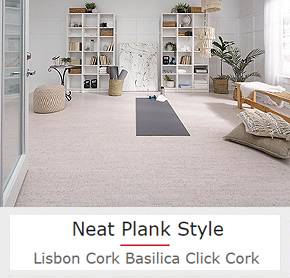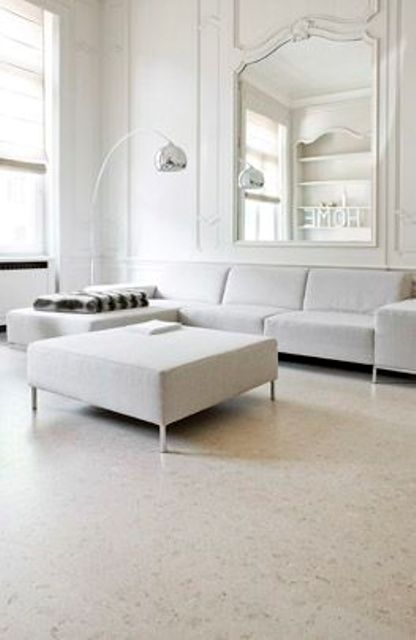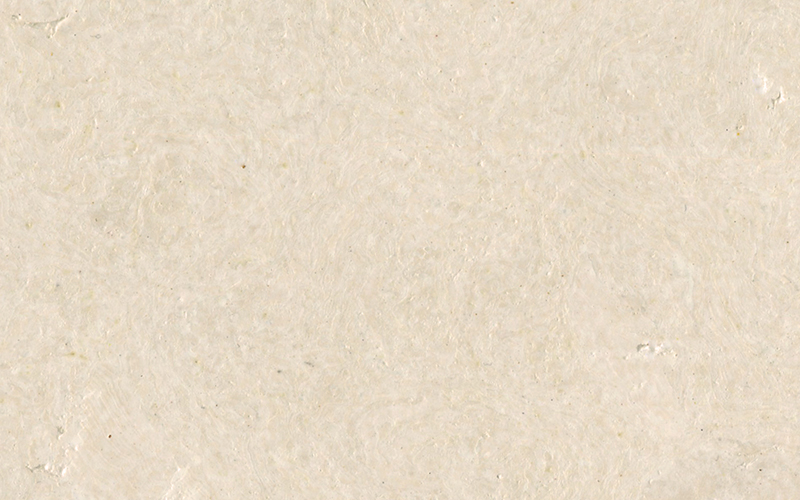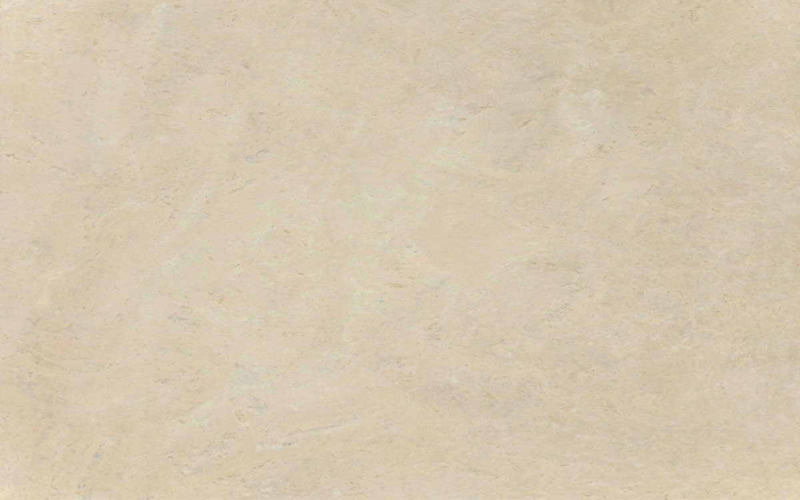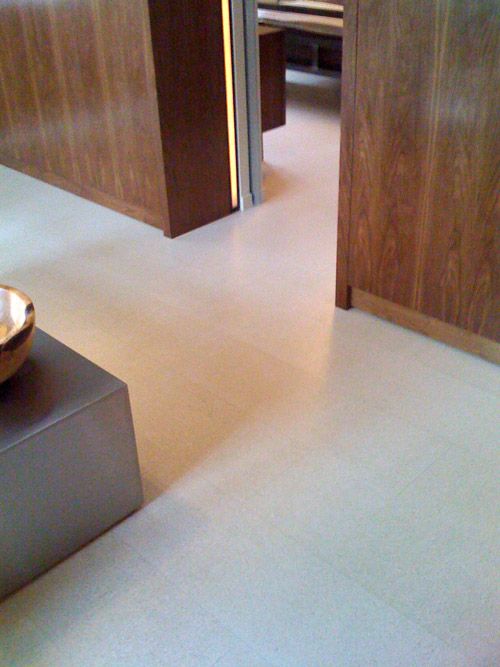What Is Light-Colored Cork Flooring
When it comes to finding a flooring option that brings both natural beauty and a sense of comfort to your home, light-colored cork flooring stands out as a unique and versatile choice. Cork, made from the bark of the cork oak tree, has been used for various purposes for centuries, but it’s only recently gained traction as a popular flooring material. Light-colored cork flooring, in particular, adds a soft, warm touch to interiors, giving rooms a spacious, airy look. Let’s take a closer look at what makes this type of flooring so appealing and why it might be the perfect fit for your home.
- Unique Texture and Softness
One of the first things you notice about cork flooring is its texture. Unlike traditional hardwood, which is firm and cold, cork offers a softer, almost cushiony feel underfoot. This softness isn’t just pleasant for walking barefoot, but it also provides a slight spring, which can make standing for long periods more comfortable. Light-colored cork enhances this softness with a light, airy vibe, which visually expands spaces and makes rooms feel inviting. - Warm Tones and Natural Look
The natural look of the cork is one of its standout features. Light-colored cork flooring, in particular, has a calming effect. It often displays subtle variations in color and grain, giving floors a warm, organic appearance that pairs well with both modern and traditional décor. These soft, warm tones work especially well in rooms where you want a cozy, welcoming atmosphere, such as bedrooms, living rooms, and home offices. - Durability That Doesn’t Compromise Style
Cork is not only aesthetically pleasing but also incredibly durable. Light-colored cork flooring is designed to withstand everyday wear and tear, including foot traffic and minor impacts. Its cellular structure gives it a natural resilience, making it both long-lasting and practical for family homes. Despite its softness, it can handle plenty of use without showing damage easily, so you get a stylish look that lasts. - Eco-Friendly Origins
Cork flooring isn’t just beautiful; it’s also one of the most sustainable flooring options out there. Cork is harvested from the bark of the cork oak tree, which can regrow after being stripped. This renewable process allows for a continued supply without harming the tree, making cork flooring a choice that aligns with environmentally conscious values. Many people appreciate knowing that their flooring has a minimal impact on the environment. - Enhanced Acoustics and Insulation
Another great feature of cork flooring, especially in light tones, is its ability to absorb sound. Cork is naturally sound-dampening, meaning it can help reduce noise within a room. This feature makes it ideal for spaces like bedrooms, children’s play areas, and offices. Additionally, cork provides some thermal insulation, keeping rooms a bit warmer, which can be beneficial in colder months. - Variety of Styles and Patterns
Light-colored cork flooring comes in a variety of textures and finishes, from smooth to patterned, so you’re not limited to a single look. Whether you’re after a clean, minimalist style or a more textured, natural vibe, cork can be tailored to fit. Light hues can range from creamy beiges to soft grays, allowing you to select an option that best complements your interior design. With so many choices, you’re bound to find a style that perfectly aligns with your aesthetic.
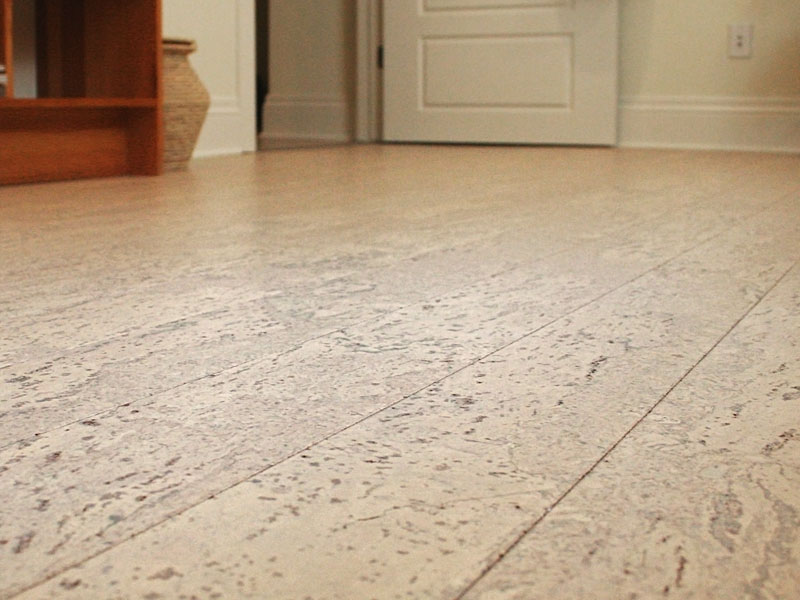
The Benefits of Choosing Light-Colored Cork: Comfort, Warmth, and Style
Choosing light-colored cork flooring goes beyond aesthetics. It offers a range of benefits that make it an attractive choice for homeowners who value both style and functionality. Cork is a material known for its warmth and comfort, and when in light hues, it brings a fresh, uplifting quality to spaces. Below are some of the most significant benefits that set light-colored cork flooring apart.
Unmatched Comfort Underfoot
Cork flooring has a natural sponginess that feels fantastic underfoot. Unlike harder surfaces like tile or hardwood, cork absorbs some of the impact, which makes it comfortable to walk on, stand, or even sit on. This characteristic is especially appreciated in high-traffic areas or rooms where people may stand for long periods, such as kitchens or home offices.
Added Warmth in Every Step
Cork is a naturally insulating material, which means it can help maintain a warmer floor temperature. Light-colored cork flooring brings a bright, cozy feel that amplifies this warmth, especially during colder months. Walking barefoot on cork feels warmer compared to stepping on tile or concrete, and this insulating quality can even contribute to lower energy costs by reducing the need for heating.
Stylish Aesthetics for a Modern Home
Light-colored flooring is a popular trend in modern interiors, and cork is no exception. Its subtle tones are easy to pair with different design elements, from sleek furniture to earthy textures. Light hues also make rooms appear larger and more open, which can be an excellent design solution for smaller spaces. This natural, minimalist aesthetic is versatile enough for almost any style, from Scandinavian to bohemian.
Soft and Quiet
Thanks to its unique cellular structure, cork flooring absorbs sound, reducing noise levels. This makes it perfect for homes with kids, pets, or shared spaces like apartments. You won’t hear the loud echo of footsteps that you might on hardwood, and it also muffles sounds from downstairs or neighboring rooms, offering a quieter, more serene environment.
Hypoallergenic and Safe for Families
For families, one major benefit of light-colored cork flooring is its hypoallergenic properties. Cork naturally repels dust, mold, and other allergens, making it a cleaner choice for those with respiratory issues or allergies. Its smooth, easy-to-clean surface also reduces the chance of allergens lingering, which can be a relief in households with pets or young children.
Sustainable, Healthy Living
Light-colored cork floors are free from many of the toxic chemicals commonly found in synthetic flooring materials. This means they contribute to better indoor air quality, an essential factor in creating a healthy home. Choosing cork allows you to bring nature indoors in a way that supports sustainability, making it a mindful and attractive choice for eco-conscious homeowners.
Eco-Friendly and Sustainable: Why Cork Flooring Is a Green Choice
With growing awareness of the importance of environmental sustainability, choosing eco-friendly flooring options is more relevant than ever. Cork flooring stands out as one of the most sustainable options on the market, offering a renewable, biodegradable, and low-impact solution. Light-colored cork flooring brings not only a chic look to interiors but also a commitment to the environment.
A Renewable Resource
Cork is harvested from the bark of cork oak trees, which can regenerate their bark without being cut down. This process is highly sustainable, as it doesn’t harm the tree itself, allowing it to live and continue growing for many decades. Light-colored cork flooring, therefore, comes from a renewable resource, making it a genuinely sustainable choice.
Reduced Carbon Footprint
The process of harvesting and manufacturing cork flooring has a low carbon footprint compared to other materials. The energy used in cork production is relatively low, and some manufacturers even use waste products from the cork industry to create flooring. Light-colored cork, in particular, requires less treatment to achieve its natural appearance, which minimizes additional processing.
Biodegradable and Recyclable
When cork flooring eventually needs replacement, it’s good to know that it’s biodegradable and can break down naturally over time. Additionally, cork can often be recycled or repurposed. Unlike synthetic flooring that ends up in landfills, cork is a material that can be returned to the earth or reused, supporting a circular economy.
Non-Toxic and VOC-Free
Many flooring options, especially synthetic ones, can release volatile organic compounds (VOCs) that affect indoor air quality. Cork flooring is generally VOC-free, meaning it doesn’t release harmful chemicals into the air. This makes it a safe choice for eco-conscious families concerned about air quality and the health of their living spaces.
Supports Biodiversity
Cork oak forests support a high level of biodiversity, providing habitats for various species. Choosing cork flooring indirectly supports these ecosystems, as maintaining the cork oak forests is essential for the environment. These forests prevent soil erosion, support wildlife, and play a role in carbon sequestration, making your flooring choice one that contributes to a larger environmental impact.
Encourages Eco-Friendly Production Practices
The demand for sustainable materials like cork encourages manufacturers to adopt environmentally friendly production practices. As more people choose cork, the industry is likely to further innovate in ways that enhance sustainability. This demand can lead to improvements in cork production, benefiting the environment on a larger scale.
Comparing Cork to Other Light-Colored Flooring Options
When you’re choosing a flooring option for your home, it’s essential to compare different materials to find the best fit for your lifestyle, aesthetics, and budget. Light-colored cork flooring brings warmth and sustainability to spaces, but how does it stack up against other light-colored flooring options like hardwood, laminate, tile, and vinyl? Each material has unique features, so let’s break down how cork compares in terms of comfort, durability, maintenance, and eco-friendliness.
Comfort: Cork vs. Hardwood and Tile
Cork is known for its softness, offering a more forgiving surface than hardwood or tile. While hardwood floors can be stunning and timeless, they tend to be quite hard underfoot, making cork the better choice if you want a softer feel. Tile, though beautiful and versatile, is often even harder and colder than hardwood, whereas cork retains warmth and provides a more cushioned feel, ideal for homes where comfort is a priority.
Durability: Cork vs. Laminate and Vinyl
Both laminate and vinyl are durable flooring options often chosen for high-traffic areas. However, light-colored cork has a cellular structure that naturally resists scratches and dents. Though cork may not be as impervious to damage as some premium vinyl or laminate options, its natural resilience makes it remarkably durable over time. Plus, cork can recover from minor indentations, which is an advantage over laminate and vinyl that don’t have this property.
Eco-Friendliness: Cork vs. Synthetic Materials
One of the biggest draws of cork is its eco-friendliness. Cork is a natural, renewable resource, unlike synthetic materials like laminate and vinyl, which often contain plastic and can release harmful VOCs. If sustainability is a top priority, cork stands out as the greenest option among these choices. Hardwood can also be eco-friendly, but it requires trees to be cut down, whereas cork is harvested from bark without harming the tree.
Ease of Maintenance: Cork vs. Tile and Hardwood
All flooring types have unique maintenance requirements. Cork flooring is relatively low-maintenance, requiring only regular sweeping and occasional damp mopping. Tile is often harder to clean because of grout lines, which can trap dirt. Hardwood, while elegant, can be vulnerable to scratches and water damage, making cork a more forgiving and lower-maintenance option, particularly for families with kids or pets.
Aesthetics and Versatility
Light-colored cork flooring is incredibly versatile, fitting well in spaces where a natural, cozy look is desired. While hardwood brings a classic and luxurious feel, cork provides a unique, modern aesthetic that complements minimalist or eco-friendly design styles. Tile and vinyl, on the other hand, offer more diversity in patterns and colors but may lack the natural warmth and subtle texture that cork provides.
Price and Installation Considerations
Cork is generally more affordable than hardwood and sometimes more expensive than vinyl or laminate. However, it’s worth considering that cork can be an investment in terms of durability, comfort, and eco-friendliness. Cork is also relatively easy to install and can sometimes be done as a DIY project, further saving costs.
Designing with Light-Colored Cork Flooring: Room Aesthetics and Décor Tips
Light-colored cork flooring opens up a world of design possibilities. Its warm, natural look lends itself to various interior styles, from modern minimalism to rustic charm. To make the most of light-colored cork’s visual appeal, let’s explore some styling tips and décor ideas that can help you create harmonious, inviting spaces in your home.
Creating a Bright and Airy Atmosphere
One of the best features of light-colored cork flooring is its ability to make rooms feel open and spacious. This effect is ideal for smaller spaces or rooms with limited natural light. Pair light cork flooring with white or neutral-colored walls to amplify brightness. You can also add light-colored furniture and soft textures to keep the room feeling airy and serene, enhancing the natural aesthetic of cork.
Pairing with Neutral and Earthy Tones
Cork’s natural, earthy look pairs beautifully with colors like beige, taupe, and soft greens. These tones bring out the organic qualities of cork and create a cohesive, nature-inspired palette. If you want a bit more contrast, consider deep greens or warm terracottas to add richness without overwhelming the subtlety of light cork.
Adding Texture for Visual Interest
To make your space more dynamic, consider incorporating a variety of textures alongside cork. Materials like wool, cotton, and natural fiber rugs add softness and complement cork’s organic feel. Throw blankets, textured cushions, or woven baskets can further enhance the cozy, welcoming atmosphere that cork flooring naturally provides.
Modern Minimalism with a Natural Twist
If you love minimalist design, light-colored cork is an excellent choice for creating a clean, modern look with a natural twist. Choose simple, low-profile furniture in neutral shades to allow the cork floor to shine. Clean lines and uncluttered spaces bring out the best in cork, making it feel like a central, yet understated, element of the room.
Creating Cozy, Warm Spaces
Cork flooring naturally creates a cozy ambiance, which is ideal for rooms like bedrooms or family rooms. Use warm lighting and soft area rugs to make the room feel even more inviting. Textured bedding, floor cushions, or a mix of throw pillows can enhance this coziness, making the space feel like a comforting retreat.
Accentuating with Natural Materials
Cork pairs well with other natural materials, such as wood, stone, and metal. For a cohesive look, incorporate wood furniture, natural stone accents, or metallic fixtures. By combining these elements, you can create a balanced look that feels grounded and connected to nature, reinforcing the organic vibe of your light-colored cork flooring.
Care and Maintenance Tips for Long-Lasting Light Cork Flooring
Light-colored cork flooring is not only stylish but also relatively low-maintenance compared to other flooring options. However, like any natural material, it requires a little care to keep it looking its best. Here are some tips for maintaining the beauty and durability of cork floors, ensuring they remain a focal point of your home for years to come.
Regular Sweeping and Dusting
Dust and dirt can accumulate on cork floors, causing scratches over time if not removed. Regular sweeping with a soft-bristled broom or using a vacuum with a hard floor attachment can help keep your floors clean without risking damage. A quick sweep every few days can go a long way in preserving the smooth, clean look of cork.
Damp Mopping for a Deeper Clean
For a more thorough clean, use a damp (not wet) mop to gently wipe down your cork floors. Avoid soaking the mop, as excess water can seep into cork and cause it to swell. You can use a mild, pH-balanced cleaner specifically designed for wood or cork floors. Avoid harsh chemicals, as they may damage the natural finish of cork.
Using Floor Mats and Rugs in High-Traffic Areas
Place area rugs or floor mats in high-traffic areas to protect the cork from excessive wear. Entryways, hallways, and kitchen spaces can benefit from additional coverage to reduce foot traffic directly on the cork. Choose mats with soft backings to avoid scratches, and make sure they don’t trap moisture underneath, which could harm the cork.
Protecting Against Sunlight and Fading
Direct sunlight can cause cork flooring to fade over time, so it’s a good idea to use curtains, blinds, or UV-protective window films to shield your floors from prolonged exposure. Consider rotating area rugs or furniture periodically to prevent uneven fading, which can keep your floors looking consistently beautiful.
Applying a Protective Finish
Light-colored cork flooring often comes with a finish that provides a barrier against spills and wear. Over time, however, this finish may wear down and need reapplication. A protective sealant can be applied every few years, or as recommended by the manufacturer, to maintain the floor’s resilience and shine.
Handling Spills and Stains Promptly
Cork is naturally water-resistant, but it’s still best to clean up spills as soon as they happen to prevent staining. Use a soft, absorbent cloth to blot up liquids rather than rubbing, which can push liquid into the floor’s surface. Avoid using abrasive materials that might scratch the finish, as these can wear down the cork’s natural texture.
Is Cork Flooring Trendy or Classic?
Different Types of Cork Flooring – Home Stratosphere
Cork Tile Globus
Snow Cork Flooring Cork flooring, Natural cork flooring, Flooring
Cool Cork Flooring Ideas For Maximum Comfort
Waterproof Cork – Wood Look – Light
Related Posts:
